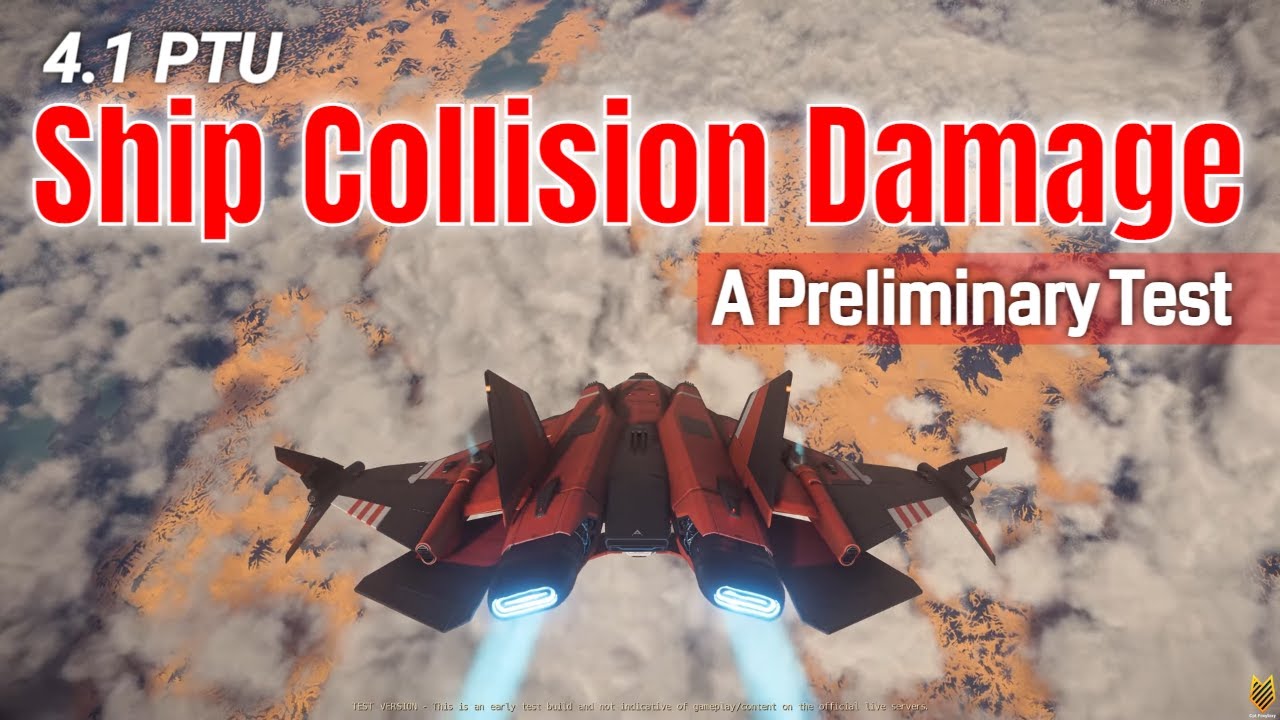In the video, the host tests the new ship collision damage system in Star Citizen’s 4.1 PTU patch, discovering that while larger ships can damage or destroy smaller ones, smaller ships often do not inflict significant damage on larger vessels during collisions. The results are inconsistent, likely due to server desync, and the host concludes that size and shield status play crucial roles in determining collision outcomes.
In the video, the host discusses the recent updates in Star Citizen’s 4.1 PTU patch, particularly focusing on the new ship collision damage system. This update enhances the realism of ship collisions by incorporating full collision data, which takes into account the mass and speed of ships involved in a collision. The host expresses curiosity about whether this update applies solely to ships or also includes vehicles. They set out to conduct preliminary collision tests with various ships to explore the new mechanics.
The host begins testing with smaller ships, including an Aegis Eclipse, and attempts to ram a Polaris. Surprisingly, the Polaris shows no damage after the collision, and the Eclipse itself also remains unharmed. The host notes that the expected outcome of smaller ships being significantly damaged or destroyed upon colliding with larger ships did not occur. They continue to experiment with different speeds and ships, but the results remain inconsistent, with some collisions resulting in explosions while others do not.
As the testing progresses, the host performs additional ramming tests with medium-sized ships like the Argo Raft and larger ships such as the A2 Hercules. They find that while some collisions result in destruction, others do not, suggesting that factors like server desync might be affecting the collision outcomes. The host emphasizes that the momentum from mass and speed should theoretically translate into damage, but the results are often unpredictable, leading to confusion during the tests.
The host then shifts focus to larger ships, including the Carrick and Hammerhead, to see how they fare against collisions. They discover that larger ships can indeed destroy smaller ones through ramming, but smaller ships struggle to inflict significant damage on larger vessels. The presence of shields on the target ships appears to play a role in mitigating damage, as ships with shields sustain less damage compared to those without. This leads to the conclusion that size and shield status significantly impact collision outcomes.
In wrapping up the video, the host reflects on the surprising results of their tests, noting that while smaller ships can no longer destroy larger ships with a single collision, larger ships can effectively damage or destroy smaller ones. They also highlight the potential issues with server desync affecting collision registration, which can lead to inconsistent results. The video concludes with a lighthearted moment as the host’s wife makes a brief appearance, reminding viewers of their personal life amidst the gaming content.
